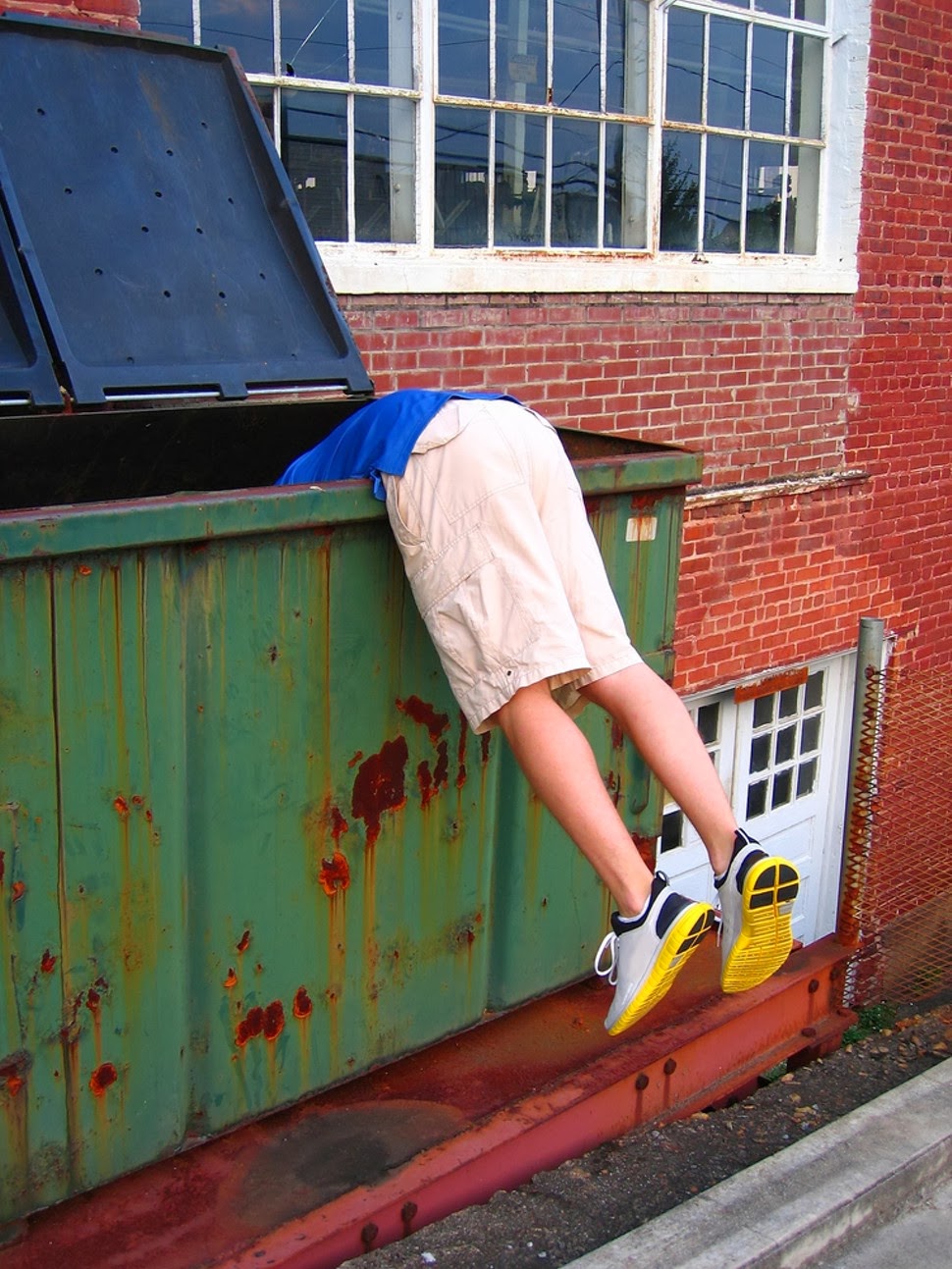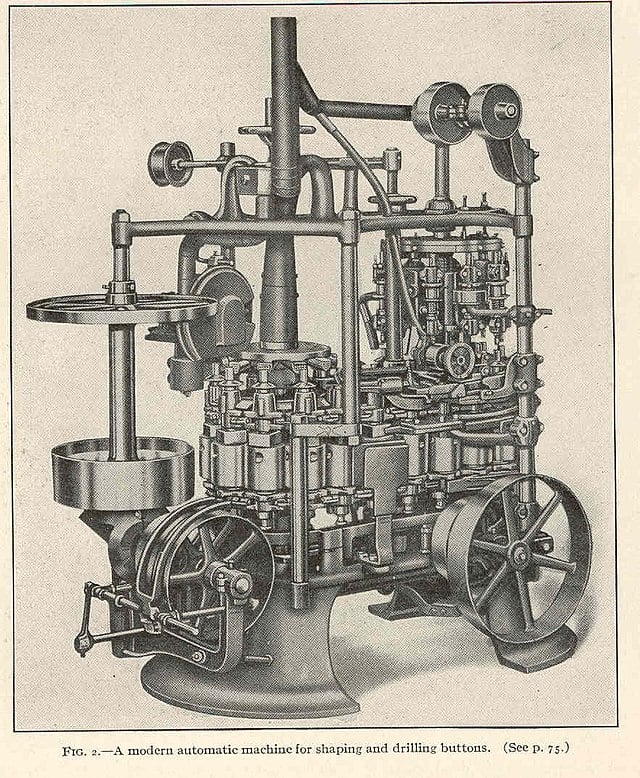People are freaking out that there is a credit card worth of microplastics in our brains but I’m just paying for things by putting my forehead on the EFTPOS machine and wondering what the limit is.
Bro I just 3D printed a model of my dick from the plastic in my blood
ah i see, you are living mostly plastic free
gotta make do with the little material you have
/jk im sure you have a palm tree there
How about a whimsical little vampire finger puppet? Grrr… arrrg…
Animals and environment - get fucked, losers!
/s (or whatever this horror is)
I’m still waiting for nature to figure out how to process plastics and bring down most of the world’s infrastructure with it. But I’m not qualified to actually know if this is even possible
It took a long time for nature to figure out how to process wood, but it eventually happened. My wooden furniture is still standing though.
There’s fungi that are eating the pacific trash patch, but the issue is that there’s not much energy to be gained from plastics we use. It’s slow.
Maybe teach that fungus how to photosynthesize.
Or cell scale fusion.
I’m vaguely qualified (biochem degree) to say it’s probably possible
that being said there’s just a lot of stuff in nature easier to eat than plastic so if some kind of plasticphagic microbe starts causing issues it’ll likely be somewhere otherwise very inhospitable, like near the poles or in space, where there’s not much else in the way of metabolizable carbon sources
which, lol. imagine going on an Antarctic or space mission and your fucking PPE starts fermenting lmao good luck
or the ocean might become so horribly poisinous that everything dies and after microbes eat all the dead biomass and then each other, then they start eating the plastic 😬
imagine going on an Antarctic or space mission and your fucking PPE starts fermenting
Michael Crichton called it in Andromeda Strain lol
The thing is that even if there isn’t much energy in plastic to be extracted, theres still enough energy in it to make a viable food source. Now, consider the humble koala and its primary food source, fucking eucalyptus leaves. Eucalytis is such a dogshit food source that koalas had to spend evolutionary time and energy just to spec into it. To the point they cant eat anything else pretty much. Combine that with the fact that eucalyptis leaves are so devoid of nutrients that the koala has to spend all day every day just snacking on them to not die of malnutrition.
Why? Why would a species even bother with this flim-flam if eucalypti sucks that bad as a food source? The answer is: Food scarcity. Because eucalytis grows everywhere where koalas live and because nobody else is bothering to tap into the food source, this sets up a ecological niche by pretty much gaurenteeing any animal that sucessfully finds a way to make it work will have unlimited amounts of food/energy just from the fact theres so damn much of it and nothing else wants to/can touch it. Sure koalas might have paid the price by sacrificing some brain wrinkles but who needs higher intelligence when you have leaves to snack on and sex to make babies.
A similar thing happened with trees and mushrooms. In the deep evolutionary history of our planet trees were once the apex forms of life with forest covering pretty much the whole planet. This is because nothing knew how to eat the wood stems for a good couple million years. Most of the coal and oil that we dig up today is actually the preserved remains of these unbroken down trees from the carboniferous period that just layed there petrified never rotting until the earths techtonic movement buried the tree corpses deep enough in the mantle for the carbon to compress into hard rock or squeezed+heated into liquid. The great change in the era happened when our humble mycelium bois finally figured out how to eat wood, causing them to essentially become the new apex life for a time by taking advantage of an unlimited and untapped food source (trees).
I suppose my point is to not underestimate the willingness of life to find new food sources. microorganisms don’t need much excuse just a slight amount of selective pressure and a couple million/billion/trillion generations of evolutionary trial and error. Which for bacteria takes maybe a couple of years I forget how quick modern microorganism colonies make new generations but its FAST. Add some science nerds who love to play God/intelligent evolution with CRISPR tek and gene tagging, yeah for sure well get plastic eating microbes figured out. Then begins the pandoras box of plastic rotting when we dont want it to.
Next issue (?) is that there’s a million types of plastic. Different compositions, different structure. Plastic eating bacteria won’t touch every variant.
If I remember correctly it is a real concern and also part of why developing a bacteria that can break down plastic is very dangerous (not just because it could degrade our tools and infrastructure, but also because it will release literally megatons of CO2 into the atmosphere)
Fyi, in the past there was nothing in nature to break down trees (lignin) and it actually was a problem as they would literally pile up and essentially be the same problem we have today with plastic (ironically it caused global cooling) https://www.thorogood.co.uk/treevolution-how-trees-came-first-and-rot-came-later-in-earths-deep-past/
The action man toy who has physically merged with my brain says you’ll never get him
Just donate plasma. Works great, gives some other schmuck your plastic.
Free 3D printing filament
Blood Benchy Boat.
Blood benchies for the blood god!
The Mogh Benchy

Isn’t plastic basically biologically inert? So unless it is physically blocking something shouldn’t we have seen adverse effects if it actually was dangerous? Or maybe health problems just haven’t been associated with it yet. I think with lead it was obvious pretty quickly. I am a dumbass tho, so maybe someone smarter can correct me.
The water surrounding DuPont plants manufacturing PFOA-based materials was contaminated with those plastics. A local farmer videotaped his cows develop ulcers, grow tumors, and eventually wither and die. He constantly insisted that something was in the water that was killing his cows. Those same chemicals are now pervasive everywhere, in everyone’s bodies to some extent. It is 100% accurate to say these chemical compounds will kill you longterm.
That’s very different though. Nobody claims that the chemicals used in plastic manufacturing are biologically inert, just that the final result is.
Dupont wasn’t dumping Lego bricks into the pond. They were leaking liquid chemicals.
Edit: I’m presuming because “This content in unavailable in your area”.
Another link talking about the case. It was confirmed that the chemical at high concentration in the water was PFOA, which is the percursor to Teflon, and which was leaking from the factory site. It has the same effects as other perfluorinated carbines (PFCs). It is also the exact chemical group that we’ve been testing peoples’ blood for, PFOA and other PFCs. It’s the group of chemicals we’ve found strong links to various types of cancers. Research communicates that it is not inert in the body as a microplastic.
It is 100% the reason those cows withered and died like they did. it directly lines up with everything else we know about PFOA. The concentrations were higher than anywhere else, which explains why the cows died so rapidly. The only reason we don’t have complete confirmation is from DuPont meddling to try and downplay this, the same way they meddled by witholding their research on the health risks of PFCs, and the same way they stayed silent and didn’t act when the alarm was sounded by that Parkersburg farmer.
I’m confused.
Is the issue here you’re using the term “micro-plastic” in a different way to me? My understanding of it is “small particles of solid plastic often reduced in size through mechanical processes to microscopic sizes which we find throughout the environment, often distributed by water”. You seem to be talking more generally about chemical water pollution.
That is my bad, not explaining this clearly.
Our formations of plastics usually utilizes petroleum products being formed into long polymeric chains. That’s what provides the pliable, even stretchy nature of many plastics. However, we don’t make all plastics out of petroleum - we also use resin mixtures and various other chemical processes for specialized plastics - PLA, for instance, is synthesized from plant starch. So, when we’re talking about ‘plastics’, we’re usually talking about petroleum products, but it includes other long-polymer-chain materials we artificially synthesize.
Having covered that, Teflon is often called a forever chemical, but it’s a chemical which we synthesize into long polymer chains so we can attach it to the surface of things. It’s how pans are non-stick, gore-tex is waterproof, and how many food containers are grease-proof. I am of the view that perflourochemicals classify as plastics because of that. And the reason it’s so pervasive everywhere is the same reason all other microplastics are everywhere: it chips off. You use a metal spatula on a nonstick pan - bam, stray Perflourochemicals, as tiny little solid microplastic flecks. And everything points to them not being inert to human health.
Plastic is mimicking certain hormones and I’m suspecting that the recent rise in cancer rates is linked to plastic intake.
Ah okay, didn’t know that. Danke.
why would you listen to a random nobody hypothesize about medicine
There is different health implications connected to microplastics like infertility and cardiovascular diseases, although the connections are not quite understood yet. The amount of microplastics in the human body is very alarming though. A study with brain samples found 0.5w% of plastics, which corresponds to roughly 6g of plastic in a brain. That’s a credit card’s worth of plastic.
This article should give some overview over different findings and implications:
https://www.theguardian.com/environment/article/2024/aug/21/microplastics-brain-pollution-health
Interesting. I had only heard about how it “MAY” be harmful before, which means nothing.
Danke für die Korrektur.
plastic can be oversimplified into “usually biologically inert molecule chains” (polymers) held together by “usually NOT biologically inert accessory molecules” (plasticizers, fillers, etc.)
BPA is a pretty well-known “fucks you up” plasticizer, hence it being banned for some applications and “BPA-free” marketing taking off (fun fact we’re still figuring out how badly BPA replacements, most being very similar molecules, are fucking us up and to what extent)
Yeah, probably just extra weight that interferes with the speed of your cells doing their job.
Yeah it’ll be like the machine that you find in museums where you put in a quarter and get an injection molded toy hot out of the mold. You just hook your arm up to an IV and it starts extracting your blood and then when it gets enough of the plastic it melts it and pushes it into the mold and spits out a little toy dinosaur.
…and you will be so happy for a few moments before you realize the machine never returned you back all your blood. You realize the machine never intended to give it back as you slowly fade into eternal slumber.
This sounds like a way to die in one of the Space Quest games lol.
Sound like a futuristic black-mirror-esque solution to blood donation motivation.
At Blood-B-Kleen, our machine will quickly and safely pull 8 pints of raw dirty blood from your vein and will return 7 pints of your cleaned blood with 99% reduction in plastics and PFAS, plus some hydrating fluids and vitamins. We don’t even charge you for it yet!
Cool, I want a racecar
Unfortunately, the machine only gives you the reverse of what you type into it.
So a racecar?
Yes. I’m sorry.
I hate it here 😭
Couldn’t they do some dialysis type thing with our blood somehow? Idk shit about science lol
Yes, in theory. It’s extremely dangerous and absurdly expensive. It also would only address the microplastics currently in the bloodstream - the ones already embedded into organ tissues wouldn’t be reliably filtered out this way.
When it comes to PFAS contamination, people have been having decent results by simply donating blood often. Getting it out of the system via blood does help to reduce overall levels in your body.
I love how we’ve come back around to bloodletting
I am so disappointed in my kidneys for not getting rid of this stuff for me.
Donating plasma works even better. They extract a larger volume of fluids per session, twice a week instead of once every 8 weeks.
Don’t worry about the recipient: If you are donating plasma regularly, your PFAS levels will be well below average.
wait are you guys serious? I know about microplastics and pfas in us but is it a fact donating helps to get rid of some?
For PFAS, yes, definitely. They’ve done studies on this, some are linked elsewhere in the thread. PFAS in the bloodstream is removed through either whole blood or plasma donation.
For microplastics, I can’t say with absolute certainty, as I don’t know the concentration of microplastics in the blood, or if replacement blood/plasma contains microplastics. But, the mechanism is the same: extract polluted fluids; allow body to replace with non-polluted fluids. Concentration of pollution falls.
A woman having a child is the biggest reduction. Make of that what you will. I sure hope the placenta, and not the baby, is getting the remainder. But I am guessing both.
Here’s a source for anyone interested. I just tested my well water where I’m at and it’s 10x over the legal EPA limit :( . Might be testing my blood next and heading to the plasma donation center!
TIL. Thank you!
Huh, I thought that they only filtered your blood when donating plasma, hence the PFAS could simply be returned to you. But I have to admit that I’m far from an expert on this matter.
Either way, we kinda have returned to bloodletting being a reasonable medical approach.
They centrifuge your blood and return the RBCs, but the PFAS hangs out in the plasma. Mostly. If there was much in the red blood cells, the liver would be removing it and you’d be pooping it out.
Wait, you can donate plasma two times in one week where you are? That feels kinda insane.
In Australia it’s 12 weeks for whole blood and 2 weeks for plasma. Or 4 weeks for switching from whole blood to plasma.
It’s so much worse than you realize. All blood and plasma must be obtained by “donation” for obvious ethical reasons, but American prisoners get incentives for participation/punishment for non-participation. Private American medical companies make billions of dollars in profit every year selling blood on the international market, but the prisoners don’t see a dime of it. The sellers are so unscrupulous that they have been caught knowingly selling tainted prisoner blood, and continuing to do so after being caught.
The events you’re talking about occurred from the 1970’s to 1983. They haven’t done prison blood drives or accepted plasma from prisoners in over 40 years.
If you’ve spent more than 72 hours incarcerated, you are ineligible to donate blood products for 12 months.
Not OP, but I was unaware of that. That must have caused most all the AIDS that was caught through transfusions.
Yep! US allows plasma donation up to two times per week, with at least 48 hours between donations.
Can’t donate plasma or blood for 8 weeks after donating whole blood, or 16 weeks after donating packed RBCs.
Packed RBCs are basically the reverse of plasma donation. Instead of returning the RBCs and keeping the plasma, they take two units of RBCs and return the plasma.
It’s called “plasmapheresis”, and they’ll pay you $40 twice a week to sit in a chair for an hour while they do it.
They’re so nice to do this out of the goodness of their hearts for any random person that asks for the procedure, at a financial loss, with no ulterior motive whatsoever.
I mean, if you really want to, you can go to the hospital and pay them to provide the exact same treatment.
Well, that’s great. Can’t wait to have a kids toy in my brain.
Extreme heat can destroy plastics, if I were to say self immolate would that be enough to remove the imbedded plastics?
Yes, but then you’d open a new hole in the ozone layer.
yes but immolation of thy self could be a hoot
Unfortunately, it doesn’t stay in the blood. Sometimes it wedges in nooks and crannies, where I accumulates and doesn’t leave until a tumor pushes it out.
yay tumors?
what if you shake em a bit?
If you shake a tumor a bit, it sends the National Guard on you
From what I’ve read yes.
Which is why all this years I had kidney failure I had spent going plastic free as possible, since I had a probably decent plastic free blood. Can’t build up much if it gets filtered 3x a week.
The needles a gigantic btw.
da brain spoon
I want them to 3D print a neat little Star Wars starship miniature out of mine. Something obscure like a Kimogila.
You can download a car… but are you allowed to “steal” (get for free) the filament???

















